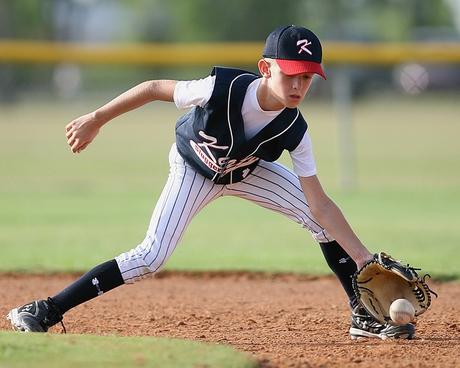 “When you catch the ball, use two hands.”
“When you catch the ball, use two hands.”
“On grounders, square up and get in front of the ball.”
“Don’t show-off and flip the ball with your glove. Take it out with your hand and throw it properly.”
The comments above are certainly in the “old school” camp of baseball coaching. You can’t go wrong with teaching players at all levels those basic fundamentals and drilling them constantly. If you do, your players will make more routine plays. That typically prevents the offensive team from having big innings (3+ runs per inning) and ultimately puts you in a position to win more games and be a good team.
However, I’ve never had an interest in just having my teams be “good.” A lot of teams are good. I’ve always wanted my teams to be “great.” Of course, many coaches are limited to the players they have access to in their school or community teams. Being able to select the players you want certainly can make “great” much easier.
However, there are some things you can do as a player and coach that can more quickly turn a good team into a great one and maybe even an average team into a good one. To do so, you’ll have to be a little unconventional and be willing to step out of your comfort zone.
In the area of fielding, this may involve doing some drills that go against traditional orthodoxy as listed above – using two hands, square up, etc.
Here are several unorthodox drills that my teams have done with very good results.
One handed fielding and catching. To become a great fielder involves making your glove feel as if it is an extension of your arm as opposed to a tool placed on your hand. The way you get there is to do as many one-handed catching and fielding drills as possible. Master one-handed fielding and two-handed fielding becomes a piece of cake. It also gives you a much better advantage when you have to move left or right to make glove side catches or backhands. Players really can only make those plays one-handed so the dilemma becomes … How do we expect them to do it if they rarely practice them? Add a lot more one-handed drills to your practice routines and you may be surprised how much better your fielders get.
Don’t let them get in front of the ball. I am convinced that one of the big reasons why young players have such a hard time fielding balls to their backhand side is because coaches spend most their time hitting balls right at fielders while harping on them to “get in front of the ball.” As a result, players grow up thinking that to backhand the ball means to be lazy. Although this is the case in some situations, great players know that backhanding some balls is preferential to getting in front of them. Even if they could, in fact, get in front of it.
My teams do a tremendous amount of backhand and forehand drills. All this (one-handed) work to both sides will more closely replicate the balls they will get during the game. Rarely will players get balls hit directly at them. They will have to move.
Good players get in front of virtually all ground balls and make most of the plays. Unfortunately, when they get a ball that must be backhanded, they often flub it. Great fielders have very high confidence in their ability to backhand and forehand grounders. They tend to get to more ground balls because their focus is getting straight to the ball hit to their left or right instead of circling around it.
Being great at backhands and forehands along with squaring up to balls when appropriate gives great fielders more options that can be selected to fit each type of grounder.
As I’ve said a billion times before, when you get older, the game gets faster. Teaching fielders to be “confidently unorthodox” at a young age can help them better match the speed of the game as they get older.

